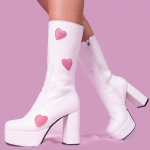
Disregarding the importance of ski goggles is a mistake no one should make, not even beginner skiers. It may seem silly at first sight, but goggles are essential equipment to ski safely. Choosing the best model will make all the difference and save you many headaches during your snow vacation, but this decision can be difficult if you still don’t know exactly what to consider right now. To help you with this task, we explain below the functions and features you should look for in your ski goggles. Check out:
Ski Goggles Are, Above All, Goggles!
In addition to protecting your eyes from the wind and snow, the ski goggles also help block the sun’s harmful effects reflecting off the white terrain. Protection against ultraviolet rays is an almost universal aspect in all parts, but also pay attention to the so-called VLT (Visible Light Transmission Index), which indicates the amount of light filtered by the lens.
It is essential to take into account that, depending on the weather conditions and the time you are on the piste, the light level can vary; that is, if you have to choose just one ski goggle to have on hand, think of a model that is versatile and adapts to varied situations.
The main function of ski goggles is to protect the eyes from sunlight reflecting off the surrounding snow and ice. The colors of ski goggle lenses and their influence on the decision
The color of the lenses often serves as an indication of the level of protection and depth perception that each ski goggle offers, but it’s not such a strict rule of thumb. Some models with photochromic protection technology automatically adjust the brightness, as in more expensive traditional glasses. Learn more about the colors of ski goggles:
In general, blue, orange, and red lenses offer intermediate VLT ratings and should suit casual skiers who are exposed to different conditions;
In places with low light and fog, the yellow, gold, and amber lenses filter the blue light, enhancing the shadows in the snow. Pink lenses are also great on low-light days;
When there is a lot of light, ski goggles with lenses in dark tones (copper, dark brown, dark gray, and dark green) will keep your eyes more comfortable while increasing the contrast.




